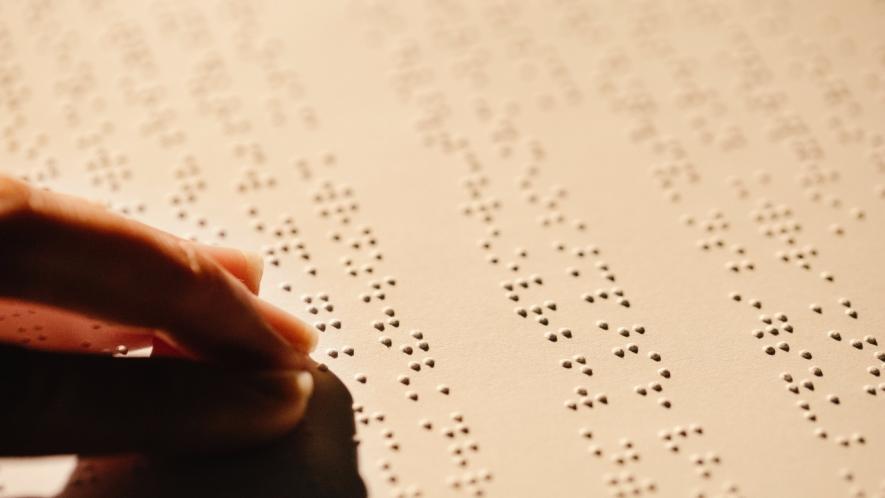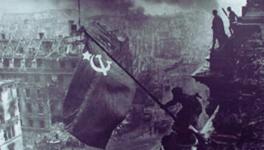Six Dots That Changed the World for the Blind

Image courtesy: needpix
On a spring morning in 1824, a gaunt, 15-year-old blind boy sat opposite the director of the Royal Institute for the blind youth in Paris. He requested the director to dictate anything he liked so that he could demonstrate a method of writing that he had been diligently working on for the last few years. Curious, the director pulled out the first book he could lay his hands on and started dictating. The boy kept punching dots as the director read on. After a few minutes, the boy read out what he had written. The director noticed with astonishment that the boy read as fast as anybody with sight. He was convinced that the boy had fashioned something which might be quite remarkable. He called every one, students and teachers, to the hall and asked the boy to demonstrate the method. After completion of the demonstration, the students and the blind teachers felt that the boy had indeed come up with something which might alter the way blind people read and wrote. The name of the director was Andre Pignier, and the name of the 15-year-old blind boy was Louis Braille, the inventor of the most widely accepted method of reading and writing for the blind.
Early Years
Louis Braille was born on January 4, 1809, in a village called Coupvray, located 25 miles away from Paris. Louis Braille was a sprightly little child who used to run around his house. He was attracted to the workshop of his father, Simon-Rene Braille, a saddle and harness maker. The different tools in his father's workshop enthralled him beyond measure. One day, while his father was busy chatting with a customer, Louis Braille climbed up the workbench and began jabbing an awl on a piece of hard leather. Within minutes, the awl slid off the surface of the leather and got into his left eye. As he shrieked in pain, his father came rushing to know what had happened to his youngest child.
As the nature of the accident became known, Simon Braille and his wife Monique tried everything they could to cure the child. However, they could not restore his sight. A pall of gloom descended on the family. However, how the 4-year-old Louis Braille adapted to the situation and began learning whatever he could gave his parents hope. When the village Church priest and the village school teacher spoke highly about Louis Braille, his parents searched for an institution where Louis could learn something. Soon, they learned about the Royal Institute for blind youth in Paris. They decided to send their boy to that school even though they knew nothing about Paris. So, at the age of 10, Louis Braille stepped into what was the first school for the blind of the world, founded by Valentine Houy.
Night-writing to a Braille Cell
When Louis Braille started his education, there was little scope for blind people to read. There were only a handful of books available. The books were prepared by embossing the letters on paper. The blind people found the books almost impossible to comprehend. The books were unwieldy as well. It was Charles Barbier, an artillery captain of the Napoleonic army, who brought a different method of writing to the school when Louis Braille was only 12. The captain had devised this method called "night-writing" while he was in the army. With the help of dots and dashes, he enabled the soldiers to convey important messages at night. This method proved fairly successful among the soldiers. That prompted Barbier to introduce it to the blind people as he felt this might help them. When he demonstrated this to the teachers and students, it sparked a great deal of enthusiasm among them, but the enthusiasm soon waned.
However, unbeknownst to all, Louis Braille kept working on it to make it simpler. He laboured for more than three years but to no avail. One day, he hit upon an idea which solved a tricky problem. What Captain Barbier tried to do in his method was to capture the sounds through dots and dashes. The more Louis Braille experimented, the more aware he became of its shortcomings. He found it difficult to capture every sound in French. However, one day, he tried to capture the letters through dots and dashes. The moment he made the switch, his task became a lot simpler. Finally, he reduced the number of dots used in the "night-writing" from 12 to six and eliminated the dashes altogether. Thus, he divided 63 characters into six dots. The dots were arranged two across and three down. Thus, after long toil and many sleepless nights, Louis Braille designed the basics of the method, which got an instant commendation from his fellow students and teachers.
Overcoming Challenges
The invention of this new method of writing was not easy for Louis Braille. Apart from the countless hours he had to spend working out combinations, he had to face obstruction from different quarters. The first challenge he faced was when he met Captain Barbier to point out certain limitations in the "night-writing". Used to command troops, Barbier was not at all prepared to hear anything against his much-vaunted invention that too from a skinny twelve-year-old blind boy. Barbier must have expected that the blind people would look up to him as a benefactor, but here was a boy finding fault with him! Angry, he left the institute. The second and even more formidable challenge came from the authorities, who refused to accept it as the official method of instruction for the blind.
The repeated pleas from the director to the Ministry of Interior, the department in charge of education for the blind, failed to elicit any positive response. In 1834, when Louis Braille demonstrated his invention at the Paris Exposition, King Louis Philip himself praised it, but the recognition was still a far cry. In fact, the situation worsened considerably when Andre Pignier was dismissed as director of the Royal Institute for the blind youth. Armand Dufau, the new director, banned the use of Louis Braille's method and went back to the old method of embossed letters. In this, he was supported by the sighted teachers of the institute as they felt that adopting the new method would rob them of their special position. Besides, they refused to believe that anything invented by a blind boy merited serious consideration. As an employee of the institute, Louis Braille had to fall in line, but the students rebelled. Even though all writing materials were confiscated, they strove hard to preserve the method.
Finally, Joseph Guadet, a young deputy of the director, convinced him to reconsider his decision. Guadet felt that the new method had become so popular that the blind students would protect it at any cost because it was very simple. Finally, the director relented and, in 1843, recognised this method in a grand opening ceremony of the institute's new campus. Louis Braille was officially recognised as its inventor. Louis Braille didn't live long to see his invention spreading rapidly beyond France. He succumbed to tuberculosis in 1852 at the age of 43, but his invention opened hitherto uncharted paths for blind people all over the world. Armed with this method, which is now called the braille system, they have embarked on a quest to acquire knowledge.
The Assertion of Independence
The Braille system is not merely a mode of reading and writing for blind people. It is something which one of their own had devised for them with so much tribulation. It is, in a sense, the first iteration of the buzzword which has come to define the disability movement,--"nothing about us, without us".
Present challenges
However, as braille completes 200 years, questions about its future are being raised in some quarters. According to some, the spread of technologies poses challenges to braille as the primary medium of reading and writing for the blind. This concern, however, is being addressed by the inventors of different technologies as braille is being incorporated, albeit gradually. Braille signages are being provided in railway compartments, foot overbridges, ATMs, lifts and even some popular tourist places. The ballots used during Parliament and Assembly elections are being made available in braille. These have come about as a result of a long and arduous struggle waged by scores of activists over a long period of time. Many a mile is yet to be traversed, though, because the quantity of reading material available in braille continues to be appallingly inadequate.
Nonetheless, these small beginnings give us hope. A more substantive challenge before braille comes from the way education of the blind is being looked at. Attempts are being made, albeit surreptitiously, to make braille less important in the teaching-learning process for the blind. There is apathy from the governments in spreading awareness about braille. In some cases, the post of braille instructor has been lying vacant for years in special schools for the blind. Despite promises by the governments, there has been no serious investment in improving the capacity of the braille presses in this country. Still, there are reasons to be hopeful. The braille system has survived many significant obstacles because of its simplicity and would continue precisely for this reason. That it has been there for two centuries when many things went into obsolescence is the testimony of its resilience. So long as blind people would feel like writing something of their own and would wish to read something, braille would be there in some form or shape, and this would be a most fitting tribute to that bland, skinny blind boy of France who devoted years to first fashion and then perfect the system.
(Anirban Mukherjee is the vice president of the National Platform for the Rights of the Disabled)
Get the latest reports & analysis with people's perspective on Protests, movements & deep analytical videos, discussions of the current affairs in your Telegram app. Subscribe to NewsClick's Telegram channel & get Real-Time updates on stories, as they get published on our website.
























